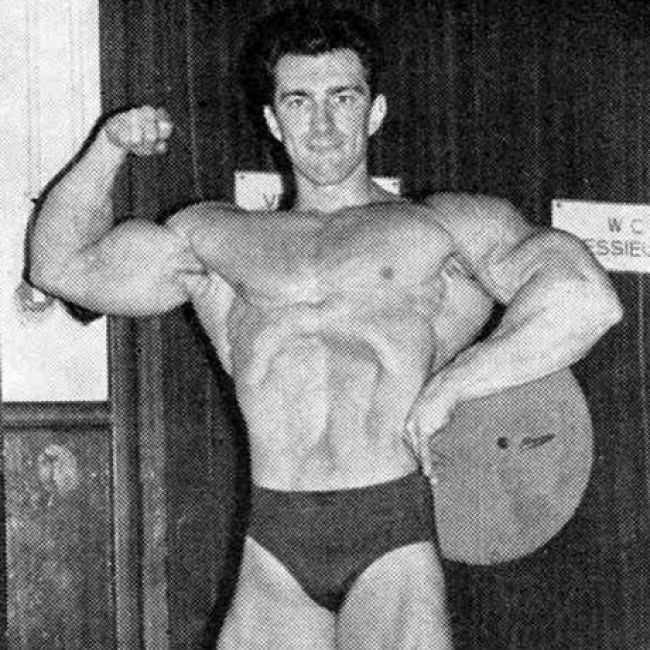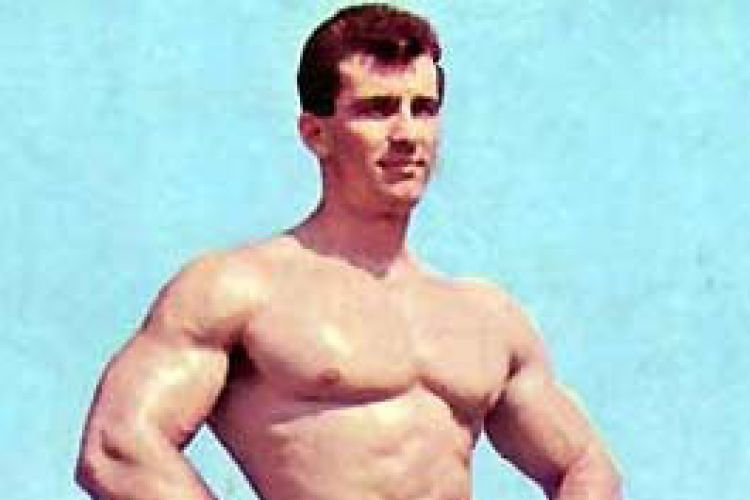Who is Bob Gajda?
The 1996 AAU Mr. America winner, Bob Gajda, is a pioneer in sports training and a bodybuilder from the United States.
Short Career of Bob Gajda
Throughout his athletic career, which came to an end the same year he earned the Mr. America title.
Bob Gajda competed against and trained with several well-known bodybuilding figures. Including Joe Weider, Arnold Schwarzenegger, and Sergio Oliva’s “The Myth”.
In addition to his achievements on the bodybuilding scene, Bob created and made popular a variety of training ideas, including the well-known PHA regimen.
He also contributed to the development of a chain of gyms and training facilities for aspiring bodybuilders. He was in charge of Chicago’s bodybuilding scene’s growth.
Bob continues to be regarded as one of the most significant forefathers of the bodybuilding business despite his seemingly infinite list of accomplishments. Here is his account:
Body Measurements of Bob Gajda
| Full Name: | Robert Steven Gajda |
| DATE OF BIRTH: | September 14, 1940 |
| ERA: | 1960, 1970 |
| PROFESSION: | Bodybuilder, Sports Training Pioneer |
| NATIONALITY: | American |
| AGE: | 81 |
| HEIGHT: | 5’9″ (175cm) |
| WEIGHT: | 185-195 lbs.(83.9 – 88.5kg) |

Accomplishments
- 1966 AAU Mr. America, 1st place
- 1966 FICH Mr. Universe, 1st place
Awards
- AOBS Hall of Fame
Biography
Sporting Events to Bodybuilding
According to Bob, he has been active for as long as he can remember. Even though he lacked strength and size as a child, Bob excelled at sports like basketball, football, and baseball.
But as Bob rose higher in the ranks of professional athletics. He understood that his lack of strength and size had caught up with him.
He was no longer able to throw the ball as far as needed and was too weak to take on challenges from his opponents.
Bob concluded that he needed to address his physical limitations at this point.
Inquiring into bodybuilding and its effects on general strength, endurance, and power came after he had started his investigation on the subject of physical strength and speed.
Bob is describing his first exposure to bodybuilding in the following way:
“At that time, I was a small man so I took the Jowett course, took the Charles Atlas course, and all the others, and then I kind of got engaged with the barbells and dumbbells.” Robert Gajda
Taking Off Behind Coach’s Back
However, Bob’s coach had not given him the go-ahead to use weights in his workouts.
Considering that bodybuilding was still in its infancy at the time, many individuals, including Bob’s coach, held the opinion that lifting weights would cause one to become “musclebound,” or “too muscular.”
Bob, however, wished to continue weightlifting. Without his coach’s knowledge, he continued working out, getting enamored with the changes his body was undergoing. But soon after, the instructor saw Bob using weights in his workout.
Once there, the instructor forced Bob to “commit in front of the Holy Mother that I wouldn’t lift weights.”
But once more, Bob didn’t pay attention. He claims that he pledged to refrain from lifting weights at home because there was where he kept them.
But even though his coach couldn’t find him, he kept working out at the nearby park district gym.
How to Succeed in Sports
Bob gained a significant amount of size, strength, and explosive power after a few months of covert weight training.
In Bob’s words, “the coach wrapped his arm around me and said, “have a look at this guy, he is throwing ten yards further, he is larger, faster, and stronger, and he did it with calisthenics.” His coach was impressed by his improvement.
The coach was mocked by Bob’s teammates, who all understood that calisthenics wasn’t the only thing that had helped Bob advance.
From that point forward, Bob continued to grow in size and shape, gradually molding the body that would ultimately earn him the 1966 Mr. America title.
Changing the Bodybuilding Scene
After his first year of weight training. Bob decided to give up his previous sports and concentrate on bodybuilding, particularly the competitive aspect of the discipline.
He initially started performing in local bodybuilding venues.
He advanced fast through the competitive ranks thanks to his lean and well-balanced physique, which eventually allowed him to compete in the famous 1964 Mr. America national competition.
Bob finished 11th in the competition that day before improving his placing the following year and coming in second place at the 1965 Mr. America.
having achieved a second-place finish at such a young age.
Bob caused a stir in the bodybuilding community; several sports analysts and bodybuilding authorities picked Bob as the 1996 Mr. America winner.
Victory Over Sergio Oliva
Sergio Oliva was, however, a significant barrier in Bob’s path to earning the Mr. America title. The Myth, a famed Cuban bodybuilder, was Bob’s toughest challenger in the 1966 Mr. America competition.
Incredibly, Sergio Oliva, a three-time Mr. Olympia, was defeated in the finals by Bob because of his body, which was so lean and toned.
The two bodybuilders were close friends outside of the stage, therefore Bob and Sergio’s competition only existed there. Here is Bob discussing his friendship with Sergio Oliva.
He was an excellent lifter. That’s what I observed right away. He was lifting weights at Sayre Park when I first met him. We were lifters; I was also lifting.
Therefore, it was weightlifting at first rather than bodybuilding. He came when I invited him over to my gym. And after that, we became partners. Robert Gajda
Career End in Bodybuilding
riding high after winning Mr. America in 1966. Bob competed in the 1996 FICH Mr. Universe bodybuilding competition as his final event.
Once more, Bob’s rivals were no match for him as he added another prize to his collection.
Following the 1996 Mr. Universe competition, Bob stopped competing in bodybuilding and shifted his attention to becoming a training coach.
Bodybuilding Factory
Over time, Bob got involved in the development of a Chicago-based network of fitness facilities.
The Duncan YMCA training facility was the first gym. where young children and teenagers would go to train and became known as “the muscle factory.”
“I was leading YMCA weight-training programs at the time, getting kids involved in the sport and raising their self-esteem,” recalled Bob.
The Chicago bodybuilding scene, which Bob helped create and develop, was greatly impacted by all of this.
Pioneer in Sports Performance
Through his bodybuilding endeavors, Bob Gajda was able to establish legendary status over the years.
from a bodybuilder who competes and wins medals. To a trainer who introduced others to the “sport of lifting.” Bob has experienced a lot in the world of bodybuilding.
having received various bodybuilding accolades as well as having assisted countless others in leading better lives. One of the most recognizable names from the “Iron Game” is Bob now for sure.
Training
Practice Basketball
When Bob was a skilled basketball player, he concentrated on body weight exercises to help him reach his goals.
He thinks that the secret to jumping high is to work on your balance, mobility, stability, and core strength.
Additionally, he discusses how bodyweight exercises are better than machine exercises for developing balance, mobility, and jump power in sports.
Here are a few of Bob’s favorite drills for enhancing these skills:
- One-legged squats
- One-legged jump squats
- Free-hand jump squats
Machines vs Free Weights
Bob doesn’t favor machines over free weights when it comes to exercise. Instead, he thinks that each one serves a different purpose in strength training.
Bob claims that using free weights improves the mind-muscle connection and muscle contraction. Additionally, Bob can use more muscle groups than he can with isolation equipment thanks to it.
Machines, on the other hand, assist Bob in isolating particular muscles.
This can be beneficial if somebody wishes to strengthen a particular muscle in his body that may be underdeveloped in comparison to other muscles.
PHA Exercise
Dr. Arthur Steinhaus was the first to use PHA, also known as peripheral heart action, in bodybuilding in the late 1940s. But Bob Gajda made it well-known in North America and Canada.
It is designed for serious bodybuilders looking for a greater challenge after hitting a plateau with their usual training.
Making the heart pump blood to the extremities is the major objective of Bob Gajda’s PHA program. This is accomplished by consistently using compound movements.
Bob claims that because it places a lot of strain on the heart, it is good for reducing body fat, increasing muscular mass, and maintaining cardiovascular health.
Peripheral Heart Action involves four to six repeated circuits of strong loads, quick rests, and upper-lower body alternations.
This is something that is only meant for seasoned bodybuilders who are familiar with their bodies, as Bob has stated. The significant strain PHA places on the body and the heart are the cause of this.
An example of a PHA total body training routine;
- Standing barbell good mornings, 8-10 reps, 60 seconds rest
- Wide-grip pull-ups, 8-10 reps, 60 seconds of rest
- Leg presses, 20-25 reps, 60 seconds of rest
- Barbell military presses, 10-12 reps, 60 seconds rest
- Repeat four to six times using the heaviest load possible
Nutrition
Egg and Milk Protein
At his peak, Bob had a diet high in proteins and beneficial fats.
Speaking of proteins, he obtained the majority of them from milk and eggs, which he considers to be among the sources of protein that are the most bioavailable. He consumed milk or egg protein at least six times every day.
Bob employed germ oils and polypeptides as his sterols to promote the growth of his muscles.
To guarantee that his body had a steady supply of the components needed to create muscle, he also consumed liquid amino acids.
Supplementation
Toward the end of his bodybuilding career. Bob employed a liver supplement to support his organs and rid his body of toxins that had accumulated due to the enormous amount of food he had been eating.
According to Bob, he once consumed up to 25 liver pills every two hours.
Here is Bob describing how he used to take liver pills: “They were convenient; there was always a water fountain available. It was humorous.
When I was bench pressing, I would occasionally start shooting them out of my mouth like bullets. I struck my workout partner in the chest.
Influences and Idols
As Bob puts it, “the people that had a combination of strength and muscle” were his early influences. They were Arnold Schwarzenegger, Steve Reeves, and John Grimek.
Reg Park and Bill Pearl, two of the original figures in bodybuilding history, are other bodybuilders who had an impact on Bob.
How Can Bob Gajda Teach Us Something?
From collaborating with historical figures like Joe Weider and Sergio Oliva to spreading awareness of bodybuilding ideas and techniques across North America.
Bodybuilding will never be the same without Bob Gajda. Bob was not just one of the most well-known bodybuilders of his day. He also produced them, and he continues to do so.
We can learn a lot from Bob Gajda and his experience. He taught us that the best thing you can do in life, in terms of your profession, is to do what you love.
Discover your passion, follow it, and don’t let anyone hold you back from realizing your dreams.
Bob has taught us to always be grateful for what we have and to help others when we can, lessons that go beyond bodybuilding.
When his career was at its peak, Bob stopped competing and started his training facilities to assist others in achieving their ideal physiques.
He understood that bodybuilding wasn’t about one person; rather, it was about forming alliances, lending a hand, and building the community to ensure the sport’s continued success.
